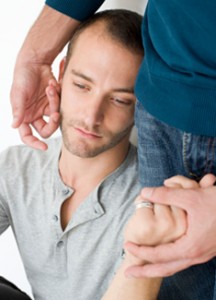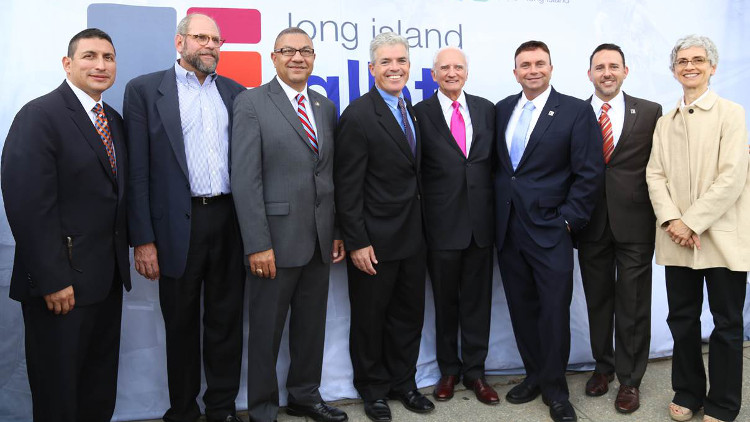Another problem arises for the LGBT community now that many are getting older and discrimination of LGBT seniors are still rampant in society. This Huffington Post article discusses the five things people should know about the aging LGBT population.
 |
| Image Source: huffingtonpost.com |
Much has been written about the growing number of older people in this country (as the baby boom generation rapidly ages), as well as the incremental shift in favorable policies and attitudes toward certain segments of the lesbian, gay, bisexual and transgender (LGBT) population. However, less public attention has been placed on the intersection of these two trends: how LGBT people experience aging, beginning in midlife all the way through later life.
A new research report—Out and Visible: The Experiences and Attitudes of Lesbian, Gay, Bisexual and Transgender Older Adults, Ages 45-76—sheds new light on these issues. Based on a 2014 nationally representative study of more than 1,800 LGBT people and more than 500 non-LGBT people, Out and Visible extensively describes how LGBT people feel and experience areas such as healthcare, finance and retirement, support systems, housing and more. The study was commissioned bySAGE and led by Harris Poll.
Here are five things this new study reveals about LGBT older people’s experiences with aging.
1. LGBT older people are concerned about their financial futures and feeling that they need to work much further into later life. Moreover, many LGBT older people rely largely on their own knowledge and education for retirement planning.
According to this new study, 42 percent of LGBT older people are very or extremely concerned that they will outlive the money they have saved for retirement, as compared to 25 percent of non-LGBT people; and half of all single LGBT older believe they will need to work well beyond retirement age. These findings speak to the importance of public policies that protect and support employment among LGBT people, as well as the critical role that financial planning has on one’s retirement outlook (as two solutions). Additionally, single LGBT people have different needs than partnered LGBT people that merit specific attention (among other characteristics explored in this study).
2. LGBT older people report fearing that if their sexual orientations and gender identities become known by healthcare or long-term care providers, as two examples, they will experience judgment, discrimination and inferior care.
Out and Visible notes that 43 percent of single LGBT older people and 40 percent of LGBT older people age 60 and older say their healthcare providers don't know about their sexual orientations. Two-thirds (65 percent) of transgender older adults fear that they will experience limited access to healthcare as they age. Prior research has documented significant health disparities among LGBT older people, spurred by a combination of poor healthcare access and the stressors of stigma and discrimination. In contrast, candid communication between LGBT people and their providers could play a role in improving their quality of care and ultimately, their overall health and well-being.
3. The support networks of LGBT older people are shrinking, and the housing outlook for many LGBT older people isn't optimistic either.
This new study reveals that 40 percent of LGBT older people report that their support networks have become smaller over time, as compared to 27 percent of non-LGBT people. Additionally, one in eight (13%) LGBT people and one in four (25%) transgender people say they have been discriminated against when searching for housing on the basis of their sexual orientations and gender identities, respectively. Secure housing and a supportive network of friends are essential to all people as they age, especially in preventing poverty and social isolation—yet this study shows that LGBT people might be compromised in this regard.
4. LGBT people are diverse and not a monolith—and this study reveals distinct differences that are relevant to providers, government and the broader private sector.
Two notable examples from this study. According to this study, African American LGBT older people are three times as likely as White or Hispanic LGBT older people to say that people from their churches or faith are part of their support systems. Moreover, transgender older people tend to be more worried about being a burden to their loved ones (48% vs. 32%), and knowing where they will live as they grow older (42% vs. 27%) than their cisgender (non-transgender) peers. The study shows additional differences across income, age, relationship status and more.
5. LGBT older people aspire to take on many of the same activities as their non-LGBT peers—yet this study shows that LGBT people are more likely to want to serve as mentors and many fear what might transpire with these options if their sexual orientations and gender identities become known.
According to the study, LGBT and non-LGBT older people cite similar interests for their retirement years: taking part in leisure activities, travel, volunteering, starting a hobby, working part-time and joining social groups. However, key differences also emerged. According to the study, LGBT older people are twice as likely as non-LGBT older people to envision themselves mentoring others (14% vs. 7%). Also, one in four (27%) LGBT older people and one in three (33%) transgender older people feels that work or volunteer activities will not be open to him/her if others know about his/her sexual orientation and gender identity, respectively.
This study builds on a growing body of research over the last few years that has increasingly, though insufficiently, studied aging concerns among LGBT older people.The report also offers a host of recommendations for leaders in the public and private sectors, most of which are largely centered on the importance of becoming more responsive to the diversity of LGBT people as they age. We’re all aging, regardless of where we fall on the age spectrum, and we deserve to age into systems that enrich our lives, not hinder them. In this sense, we can all play a role in building a more equitable society.
Follow this Rainbow Vision Santa Fe Facebook page to learn more about the aging population of the LGBT community.












